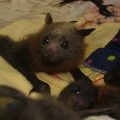PTE考生目前最大的问题之一就是练习题缺乏。除了有限的基本官方书(PLUS,Testbuilder, OG)之外,就没有题了。很多英语基础不是很扎实的同学很难找到练习材料。墨尔本文波雅思PTE培训学校专门为墨尔本,悉尼PTE考生准备了适合PTE听力阅读练习的科学60秒。各位PTE同学可以练习PTE听力中的summarise spoken text和PTE口语中的retell lecture,PTE听力口语-科学60秒-Frosty Moss练习记笔记技巧和复述。废话少说,下面开始:
Mysterious Desert “Fairy Circles” Caused by Termites
听力内容:
60秒科学节目(SSS)是科学美国人网站的一套广播栏目,英文名称:Scientific American – 60 Second Science,节目内容以科学报道为主,节目仅一分钟的时间,主要对当今的科学技术新发展作以简明、通俗的介绍,对于科学的发展如何影响人们的生活环境、健康状况及科学技术,提供了大量简明易懂的阐释。
The Namib Desert’s strange circular patches of grass with bare centers are the result of termites establishing reservoirs. Sophie Bushwick reports
In southwestern Africa’s Namib desert, the lack of rainfall keeps grass sparse. But in some areas, mysterious rings of grass with bare centers appear and thrive. Now scientists have discovered these so-called fairy circles are indeed created by wee little creatures—termites. The work is in the journal Science. [Norbert Juergens, The Biological Underpinnings of Namib Desert Fairy Circles]
Many organisms live in and around fairy circles, which range from one to 50 meters in diameter and persist for decades. But scientists found only one species consistently inhabiting even the youngest fairy circles. The sand termitePsammotermes allocerus is thus the most likely culprit behind the rings.
How do termites make fairy circles? Living grass sucks up rainfall and loses the liquid to evaporation. But when termites cluster together, feeding on and destroying vegetation, they leave a roughly circular bare patch that stores more water than the surrounding soil. The fairy circle thus acts as a water reservoir for the sand termites, the grasses around the edge and other thirsty organisms.
So maybe we should start calling these rings “termite circles.” Nah—sounds a bit wooden.
—Sophie Bushwick





